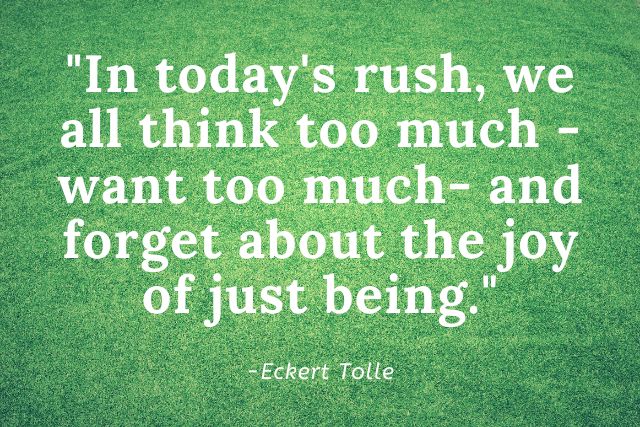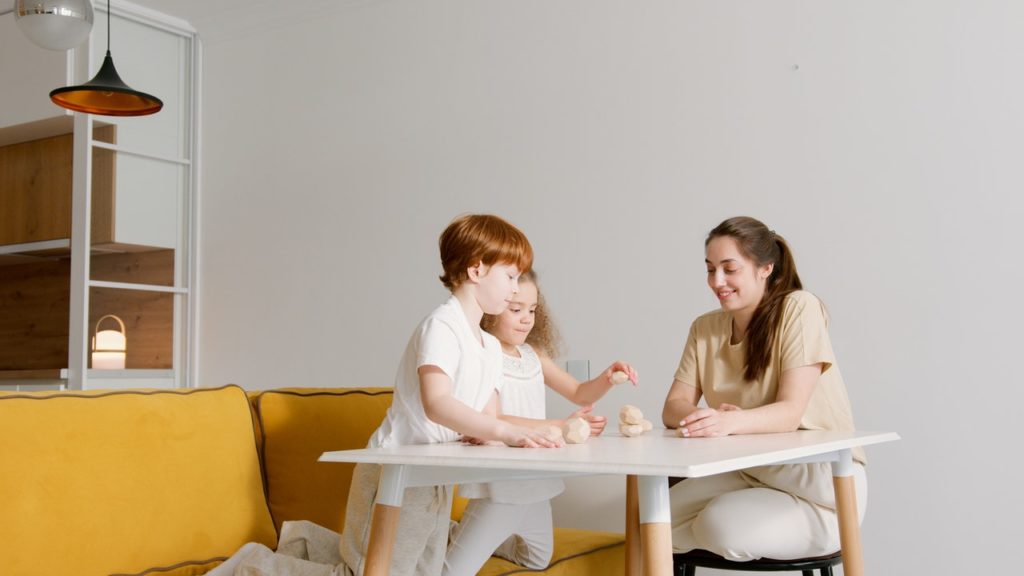Mindfulness
Mindfulness in the Home: Family Mindfulness Activities
Life as we know it is moving faster than most of us can keep up. Rushing from work to soccer practice, school play, ballet recital – it all becomes tedious over time.
Your brain can become addicted to being in multi-task mode. Yet, it often feels like you don’t have time to spend with each of your family members. Family mindfulness activities can feel like the last things on your mind.

The solution to this problem might just be practicing mindfulness. In developing simple and easy practices for a more peaceful family life, it will help to simplify life and help to improve concentration in both you and your children.
Incorporating family mindfulness activities definitely takes practice, but the long-term benefits are inarguable.
What is Mindfulness?
Mindfulness is a practice in which a person learns to focus on one thing at a time. A person practices living in the moment.
And, they practice fully participating mentally in every little thing we do during our day. Practicing family mindfulness activities aids in many mental changes, such as:
- Alleviating bullying tendencies
- Mindfulness supports your child’s mental health
- Enhance focus on ADHD children
The implementation of mindfulness assists the children’s ability to pay more attention and develop their concentration.
Practicing mindfulness aides in children calming themselves. And, it helps in making decisions.
According to J. Coatsworth et al in their study on family mindfulness in 2014, in teaching mindfulness to parents and children “through a family-centered intervention approach” has shown positive outcome with the parent/child dynamic.
Parents and caretakers are taught to approach their children in a mindful way that shows emotional awareness. Also, it shows non-judgement to their thoughts and feelings, as well as aiding in self-regulation. Furthermore, this is all while exhibiting compassion.
Families are becoming more aware of how they respond and react to situations with their children. Being more mindful does help in a positive outcome and better understanding of each other.
Moreover, mindfulness helps with social and emotional growth. Tara Hornich-Lisciandro, writing for the National Education Association, had this to say.
“Mindfulness practices help the bully, victim, and any witnesses involved develop a deeper awareness of themselves, resilience, compassion and a greater ability to regulate their emotional response.”
Using mindfulness as a type of “medicine” could reduce anxiety that builds up in a child. Significantly, this type of “medicine” could help to reduce the anxiety in a child that would cause bullying.
Becoming a more mindful student takes practice. And, helping with family mindfulness activities is a great way to practice.
Family Mindfulness Activities to Improve Concentration in Your Children
There are many ways to practice improvements in child(ren)’s concentration. Firstly, you can learn to meditate together.
Also, you can implement single-task focus times. And, you can play games that will build your focus.
1. Meditation with the Family
Meditation is beneficial to your whole family. Meditating is a technique to train the brain to focus on an activity, thought, or object. In this way, you can concentrate on creating a calm and focused state.
So far, much research has supported the benefits of meditation in our daily lives. For example, in school systems, there is much evidence that shows significant benefits to students.
Students who practice meditation in the school day have higher academic scores and success than students who haven’t been taught to meditate.
Mindfulness meditation has shown to improve focus and concentration for students.
In fact, some schools have implemented meditation instead of using detention. So, it has shown to be anecdotally beneficial in changing troubled behavior.
Research has also linked meditation practice with better sleep, less anxiety, and feeling more positive. Studies have show that meditation can help increase your melatonin and serotonin levels.
This is great for lowering your blood pressure and to assist the brain to trigger your sleep mode.
So, with so much evidence showing the benefits of meditation, why not try meditating at home with the whole family?
It’s simple and easy. And, in the end, you and your family will feel relaxed and at peace.
Here are some steps to get you started:
- Find a quiet space with little to no distractions.
- You can choose to either sit or lie down. If you are meditating at bedtime, lying down would be best.
- Now close your eyes, try to empty your thoughts and breathe. Breathe to a count of three or four, and then breathe out to the same number. As you meditate more, the deeper your breathing will become.
- If you wander into a thought or your brain wanders, refocus and concentrate on your breathing. Your breath will be your guide.
The practice of meditation doesn’t need to take a large part of your day. Even five minutes can reset your thought process and it is one of the more quick and easy family mindfulness activities.
2. Practice Single-Task Moments
Family mindfulness activities and the term “living in the moment,” are stand-out phrases! So, you’ll these phrases in various parenting circles.
These terms refer to focusing on one act, one focus, in order to simplify your life.
There are many tasks that we don’t do singularly. So, we are in a constant state of multi-tasking. Furthermore, we tend to feel that our lack of time feeds this need to do everything at once.
For example:
- We tend to get ready for the day – while making sure the children are getting ready for the day themselves.
- While driving home, we ask our kids about their day – while meal-planning for dinner at the same time.
Some suggestions for the thirty-day habit would go as follows. Firstly, schedule a specific time during the day to connect daily. Use this connection period to focus on nothing but a conversation with your children.
Listen with the whole body. So, face them, make eye contact, put the phone down, turn off the TV. Furthermore, nod and react to what they’re saying. It’s so easy to nod absent-mindedly while preparing dinner as your children talk to you.
Wake up a little earlier
Waking a little earlier could be the big difference in you embracing the morning. This gives you the chance to focus only on getting dressed together and greeting the day fully in-the-moment.
Typically, we tend to always be in a rush in the morning to get ready for school and work.
‘Rose & Thorn’
‘Rose & Thorn’ is a great way to learn about your child’s day. Each member of the family describes the “rose” of their day.
This is a good moment they enjoyed. Then, they describe the “thorn.” So, a moment that was not-so-great.
Cooking and baking
Cooking and baking are more great ways to perform a single task with your children.
These are tasks in which you must fully focus on one task. Furthermore, an added bonus is they’re learning a valuable skill they can use as adults.
3. Family Mindfulness Activities: Game Night Ideas
There are many different types of games to build up your child’s concentration as well as time well spent in single-focus activity.

Memory games
Are memory games fun for you? Why not try one of the matching card games, What’s Missing, or even picture bingo?
Classic “Memory” card games are great for kids (and adults!) to start practicing focus and attention span. You can easily cater them to various age groups.
Just do this by starting with very simple sets to more complex ones for older kids. Families will learn to tune out distractions to focus on memorizing cards & images.
Games that focus on strategy & sequences
More of a strategy game player? Maybe Connect 4® would be an excellent game to have. Putting things in alphabetical order, following a series of instructions (such as LEGO building) or cooking together with a recipe.
All of these follow a sequence. Sequenced activities have been shown to improve concentration for kids. You may enjoy our article: Building Better Motor Skill Habits with LEGO® Based Therapy
Fast-paced reaction games
Kids with concentration issues do very well with card games that are fast and timed with simple rules.
Games like UNO®, War, and Egyptian War. Poor concentration in child players can reduce simply due to the fun they have while being engaged!
Each of these requires a lot of focus on simple visuals and involve a lot of rapid reward for winning short rounds. They are perfect for kids with low attention spans.
And, they habituate a child into focusing on one activity at a time for longer periods of time. (As opposed to a long game like Life® or Monopoly® where there is a lot of down time between turns).
Image Comparisons
This is where a child looks at two different images and identifies things that are not the same in both. Start with simple versions with just 2-5 differences for preschoolers.
Then, work up to more subtleties and up to 10-15 differences helps children practice focusing for longer and longer periods of time until they’ve “finished.”
4. Using CoordiKids to Improve Focus & Mindfulness
In our occupational therapy practice at CoordiKids, we designed a program called Coordikids Home Course. CoordiKids is designed to target certain areas of brain function to improve motor skill and sensory processes.
Each of these programs provides short videos of follow-along physical exercises.
And, because the areas of the brain that include motor and sensory skills also overlap with attention and sleep rhythms, the CoordiKids Home Course program has also shown to improve concentration and focus.
For example:
- bilateral movements encourage both hemispheres to be active,
- balance and rhythm support concentration, and
- an auditory component encourages listening.
All in all, in the 15-minute per day movement therapy, the focus is on body movements. This gives the cortex (thinking brain) a break to refresh and get ready to concentrate.
Know What to Expect – and Be Flexible
When implementing some of these steps to create a more mindful daily life, keep in mind that every day is different from the next.
Some days it will be easier to focus and commit to your routine than others. Be patient with yourself and your family.
The trick is not to force your children into any of the family mindfulness activities that you researched. Does Connect 4 not sound fun tonight after all? So, change it up a bit.
Maybe meditation at that exact moment you choose may not be the right time. Try switching meditation time to a different location. Or try a different time of day.
Remember, practicing mindfulness shouldn’t feel like a punishment or a time out. Mindfulness is a way to help your family slow down, self-asses and regulate, tune into anxious thoughts or frustrations, and create healthier mental habits.
In the end, the goal of family mindfulness activities is to bring your family closer. Keep it light, simple, and, most of all, fun.
References:
The Mindfulness‐enhanced Strengthening Families Program: Integrating brief mindfulness activities and parent training within an evidence‐based prevention program. J. Douglas Coatsworth et al. August 2014
Are Mindful Students Less Likely to Bully? by Tara Hornich-Lisciandro published in the National Education Association.
Impact of mindfulness meditation intervention on academic performance, Jian Wei Lin& Li Jung Mai,. , September 2016.